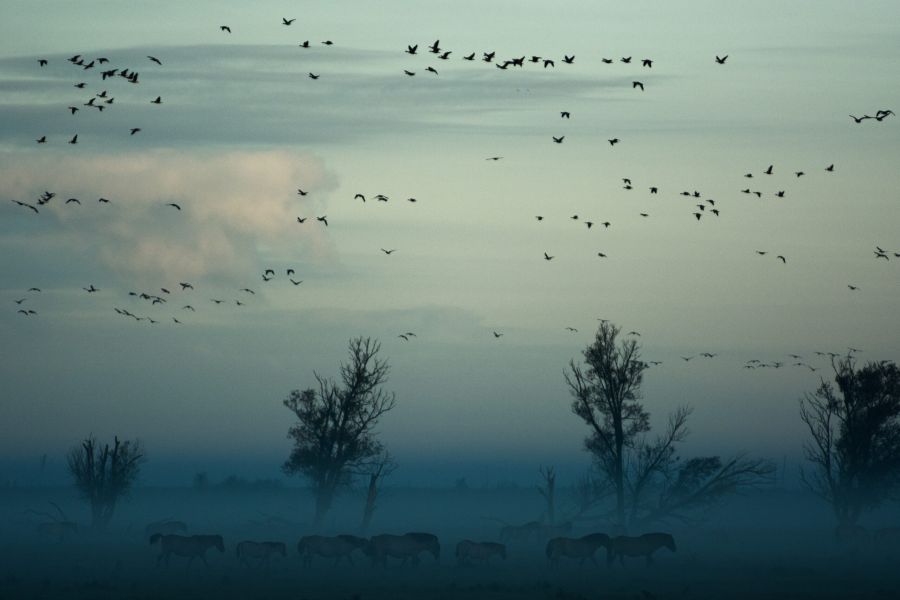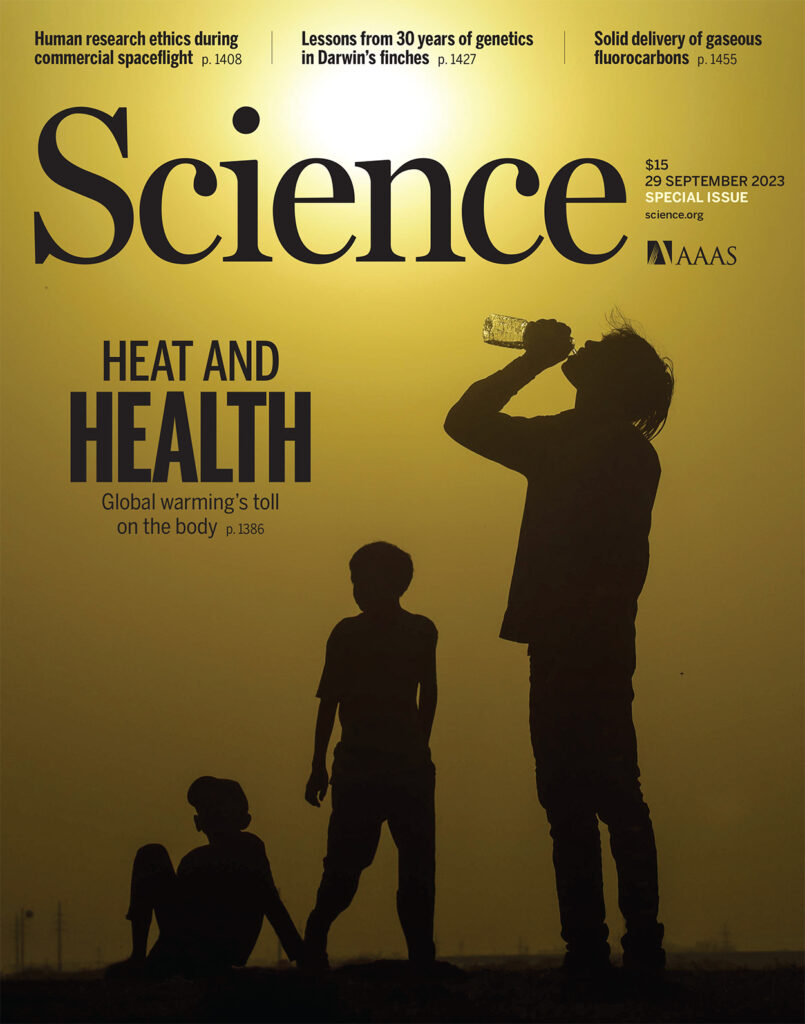Flight risks

Changing bird migrations threaten to bring new infectious diseases to humans. Migratory birds efficiently ferry pathogens around the world. As a warming climate reshapes their journeys, infectious disease experts are on guard for new threats to humans.
A version of this story appeared in Science, Vol 381, Issue 6665.


Germany, Sweden, and the Netherlands—One day in May, a team of scientists parked their cars in a German nature park near the Baltic Sea and stared at the top of a 30-meter-tall black poplar tree. They were seeking eagles—and clues to the stream of viruses and other pathogens coursing along Europe’s flyways in the guts of migratory birds. These white-tailed eagles don’t migrate much. But the adults capture and eat birds that do, and feed the prey to their offspring.
It was a month or so into the breeding season, and the scientists hoped to find nestlings—far easier to trap than adult eagles. A local eagle watcher pointed to a nest at the top of the tree. The signs were good. In the distance, a white-tailed eagle soared in the clear sky, and Anne Günther, the veterinarian leading the project, smiled as she pointed to plaques of white goop staining the grass: fresh eagle feces. It was time to take a closer look at the nest.
Veterinarian Oliver Krone, who is based at the Leibniz Institute for Zoo and Wildlife Research and has studied white-tailed eagles for 23 years, deftly hovered a drone over the nest and saw three eaglets. A tree climber dressed in camouflage slingshotted a rope over a sturdy branch and scurried up it, carrying a sack. Soon the fluffy gray eaglets and the dead prey in the nest had been lowered to the ground. The researchers banded, swabbed, and drew blood from the eaglets, all to be analyzed for pathogens they might have picked up from their migratory prey and for antibodies from their mother, signs of past infections. They also sampled the carcass of a wigeon, a dabbling duck, that was found in the nest.
Ducks and other migratory birds efficiently transport all kinds of microbes around the world, including novel influenza strains that threaten poultry and humans, West Nile virus, and a wide range of bacteria that can sicken people and harbor antimicrobial resistance genes (see sidebar). Günther’s project, which has already detected a devastating bird flu strain in the eagles, is funded by the Versatile Emerging infectious disease Observatory (VEO). A $30 million Europe-wide collaboration, VEO aims to improve the early warning system that tracks key pathogens, potentially thwarting pandemics.
“We’re trying to figure out what do hot spots look like for human risk,” says VEO project coordinator Marion Koopmans of the Erasmus Medical Center.
“It’s not as simple as when this happens, that will happen,” Koopmans says. But untangling the relationships—and learning what warning signs to watch for—is critical, she adds. “Can we narrow down the multitude of factors that do drive disease emergence to a set of indicators that you can build into a monitoring system?” Koopmans asks. “I’ve spent decades now chasing outbreaks. It’s not good enough. Once it starts spreading, it’s too late.” – VEO project coordinator Marion Koopmans of the Erasmus Medical Center.
Source: Science
Author: Jon Cohen
Date: 28 September 2023